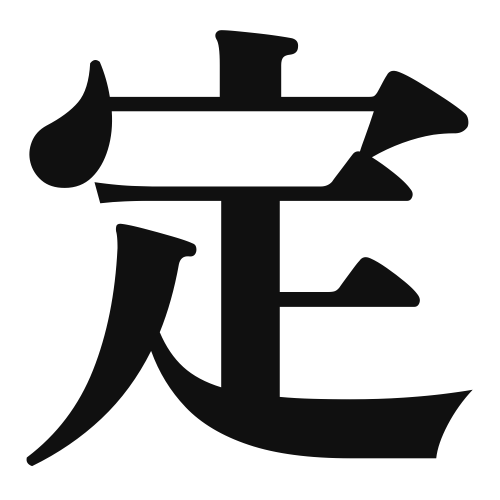1. Overview of Meaning
The kanji “定” (pronounced “tei” or “jou”) generally means “to determine,” “to fix,” or “to establish.” It conveys a sense of stability and certainty in various contexts.
2. Formation and Radical
Formation of the Kanji: The kanji “定” is a compound character (会意文字) that combines elements to convey its meaning. It consists of the radical “宀” (roof) and the character “青” (blue or green), symbolizing a stable place under a roof.
Radical: The radical for “定” is “宀,” which relates to buildings or structures, emphasizing the idea of a fixed or established place.
3. Examples of Usage
Common Words and Phrases: Some frequently used words that include “定” are:
- 定義 (ていぎ, teigi) – definition
- 定期 (ていき, teiki) – regular, fixed term
- 安定 (あんてい, antei) – stability
Example Sentences in Daily Conversation:
- この問題の定義を教えてください。 (Please tell me the definition of this problem.)
- 彼は定期的に運動しています。 (He exercises regularly.)
4. Synonyms and Antonyms
Similar Kanji: A similar kanji is “確” (かく, kaku), which means “certain” or “sure.” While both convey a sense of certainty, “定” emphasizes fixing or establishing something, whereas “確” focuses more on assurance.
Opposite Kanji: An antonym for “定” is “不定” (ふてい, futei), which means “unstable” or “indeterminate,” highlighting a lack of fixedness or certainty.
5. Cultural and Historical Background
Relation to Japanese Culture: The concept of “定” is significant in Japanese culture, where stability and order are highly valued. It is often associated with traditional practices and societal norms.
Proverbs and Idioms: One common saying is “定石” (じょうせき, jouseki), which refers to established strategies or methods, particularly in games like Go, emphasizing the importance of fixed principles in decision-making.
